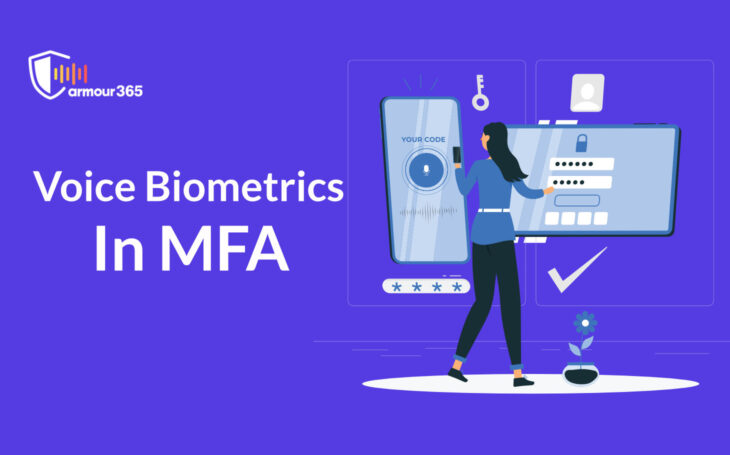
Identity theft is one of the fastest-growing crimes as it is a low-risk but high-reward act and is a threat to businesses of all sizes. Hackers can easily gain access to a digital resource or application as usernames and passwords are vulnerable to brute force attacks.
The Federal Trade Commission (FTC) in the US reports that there were nearly 1.4 million reported identity thefts in 2020. Well, cybercriminals already have more than 15 billion stolen logins from 100,000 breaches.
The average criminal will find it extremely hard to steal your information if they are forced to provide two or more types of authentication. This is where multi-factor authentication becomes important.
What is Multi-factor authentication (MFA)?
Asking the user to provide two or more methods of identification to gain access to an application or a digital resource is called multi-factor authentication. It is an important part of the identity and access management department (IAM). Using a number of identification methods mitigates the chances of a cyber attack.
Why is Multi-factor Authentication Important?
Given the reality of today’s business landscape, more and more organizations are embracing multi-factor authentication. By asking more than just a username and password to provide access to a user, you increase your organization’s security. Adding physical verification methods such as a thumbprint or a security USB key will shoot up the chances of being safe from cybercriminals.
If you add biometrics technology to your multi-factor authentication, it becomes more robust and secure. While cybercriminals have found a way around by using 3D printers to create fingerprints and face masks to gain access, voice biometrics is relatively harder to crack.
Let’s look at why using voice biometrics in multi-factor authentication is the smartest and most secure way to guard your organization from external forces.
Using Voice Biometrics in Multi-Factor Authentication
Voice biometrics is hard to spoof because the voiceprint is created and stored in the client’s own infrastructure; therefore, the verification process becomes device-independent. Plus, voice biometrics is equipped with an anti-spoofing layer, which can detect and prevent infiltration attempts such as synthetically generated voices and recorded voice playback.
Speech recognition breaks down the voice into frequencies, and they are used to identify the tones and inflections in a user’s voice. The tone, pitch, volume, and the unique modulation that comes from dialects, accents, etc., are considered while making a ‘voiceprint.’
Benefits of Using Voice Biometrics In Multi-factor Authentication
With 52% of data breaches attributed to weak passwords and human error, there is no doubt that traditional methods of authentication need a complete overhaul. Let us look at how voice biometrics in multi-factor authentication benefits businesses.
#1 Increased security:
Voice biometrics is difficult to spoof when compared to PINs, security questions, and IDs. The user doesn’t have to share their personal data or answer a series of questions to gain access. Since each individual’s voiceprint is unique, it becomes incredibly difficult for hackers to reproduce the same. As said before, AI-powered voice biometrics tools come with an anti-spoofing layer that identifies when there are attempts to digitally alter the voice to be similar to that of the user.
The latest reports from ID R&D say that there has been a huge increase in the accuracy of voice biometrics- a 0.01 percent false acceptance rate and a false rejection rate (FRR) of 5 percent. While 5% might look like a huge figure, when you add voice biometrics with other methods of authentication to validate a user, it will be extremely accurate.
Note: FRR is the likelihood that the biometric system will reject an access attempt by an authorized user.
#2 Significant cost-savings:
Voice biometrics reduces operational and fraud costs by a huge margin. It enables contact centers to quickly authenticate transactions by increasing IVR containment. The time spent in the IVR system is reduced, thereby decreasing call handling time. Voice biometrics in multi-factor authentication reduces the burden of maintaining and retaining passwords, integrations, personnel, and backend costs.
ZenDesk’s research says that the average IT help desk receives more than 492 tickets per month, and it takes an average of 24.2 hours to resolve each of them. The cost per minute of service desk handle time averaged $1.60. Therefore, a 10-minute interaction could cost the company $16. Voice biometrics can reduce this number by a huge margin as authentication happens within seconds.
#3 Satisfied customers:
Every interaction of your customer with your call center is a chance for you to increase their satisfaction. When you authenticate them faster without putting them through an arduous verification process, thanks to voice biometrics, you have already gained their acceptance. Users are also comfortable using voice-powered tools to get things done online, so it is even more prudent on the business’s side to augment voice biometrics adoption.
#4 Detect telephone fraud:
Voice biometrics technology is not only used to authenticate customers and prove their identity but also to help agents detect telephone frauds. Thanks to the reliable voiceprint created and stored in the company’s system, it can get real-time risk scores for every call that they receive. Based on this real-time information, it is possible to identify illegal activity immediately.
Examples of Voice Biometrics in multi-factor authentication:
- For healthcare applications, voice biometrics provides an additional layer of security that prevents unauthorized access to patient records.
- In the financial services industry, voice biometrics is used to process thousands of verifications a day.
- For organizations that have a large, distributed workforce, voice verification is a secure system to badging systems.
- Using voice to verify and authenticate callers in call centers saves time and effort for the customer and the agent.
- Prevents unauthorized access to data or financial resources, thereby reducing fraud
- It can be used across the public services domain to identify the caller.
Conclusion:
Voice biometrics solutions provide a fool-proof method of verification. It also prevents fraud and empowers the users through self-service, thereby helping organizations to save costs by reducing admin expenses. There has been a huge increase in the number of companies using voice biometrics, and it will only keep increasing.
Would you like to offer your customers a smooth authentication process? Armour 365, Gnani AI’s proprietary tool, can be used in IVR, Whatsapp, and on your website. Get on a call with us to understand how our voice biometrics can help with user authentication.




